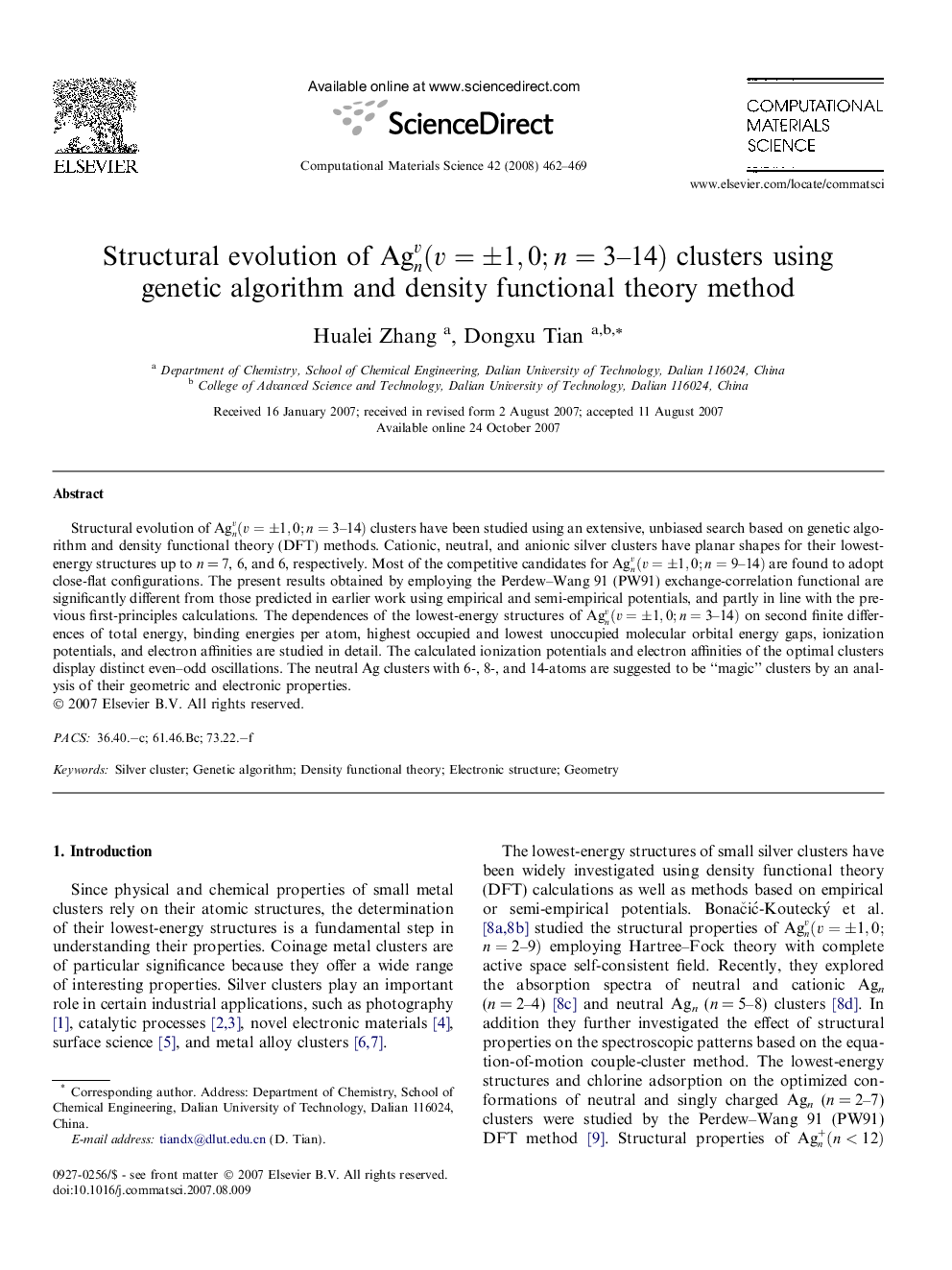| Article ID | Journal | Published Year | Pages | File Type |
|---|---|---|---|---|
| 1563939 | Computational Materials Science | 2008 | 8 Pages |
Structural evolution of Agnv(v=±1,0;n=3–14) clusters have been studied using an extensive, unbiased search based on genetic algorithm and density functional theory (DFT) methods. Cationic, neutral, and anionic silver clusters have planar shapes for their lowest-energy structures up to n = 7, 6, and 6, respectively. Most of the competitive candidates for Agnv(v=±1,0;n=9–14) are found to adopt close-flat configurations. The present results obtained by employing the Perdew–Wang 91 (PW91) exchange-correlation functional are significantly different from those predicted in earlier work using empirical and semi-empirical potentials, and partly in line with the previous first-principles calculations. The dependences of the lowest-energy structures of Agnv(v=±1,0;n=3–14) on second finite differences of total energy, binding energies per atom, highest occupied and lowest unoccupied molecular orbital energy gaps, ionization potentials, and electron affinities are studied in detail. The calculated ionization potentials and electron affinities of the optimal clusters display distinct even–odd oscillations. The neutral Ag clusters with 6-, 8-, and 14-atoms are suggested to be “magic” clusters by an analysis of their geometric and electronic properties.
